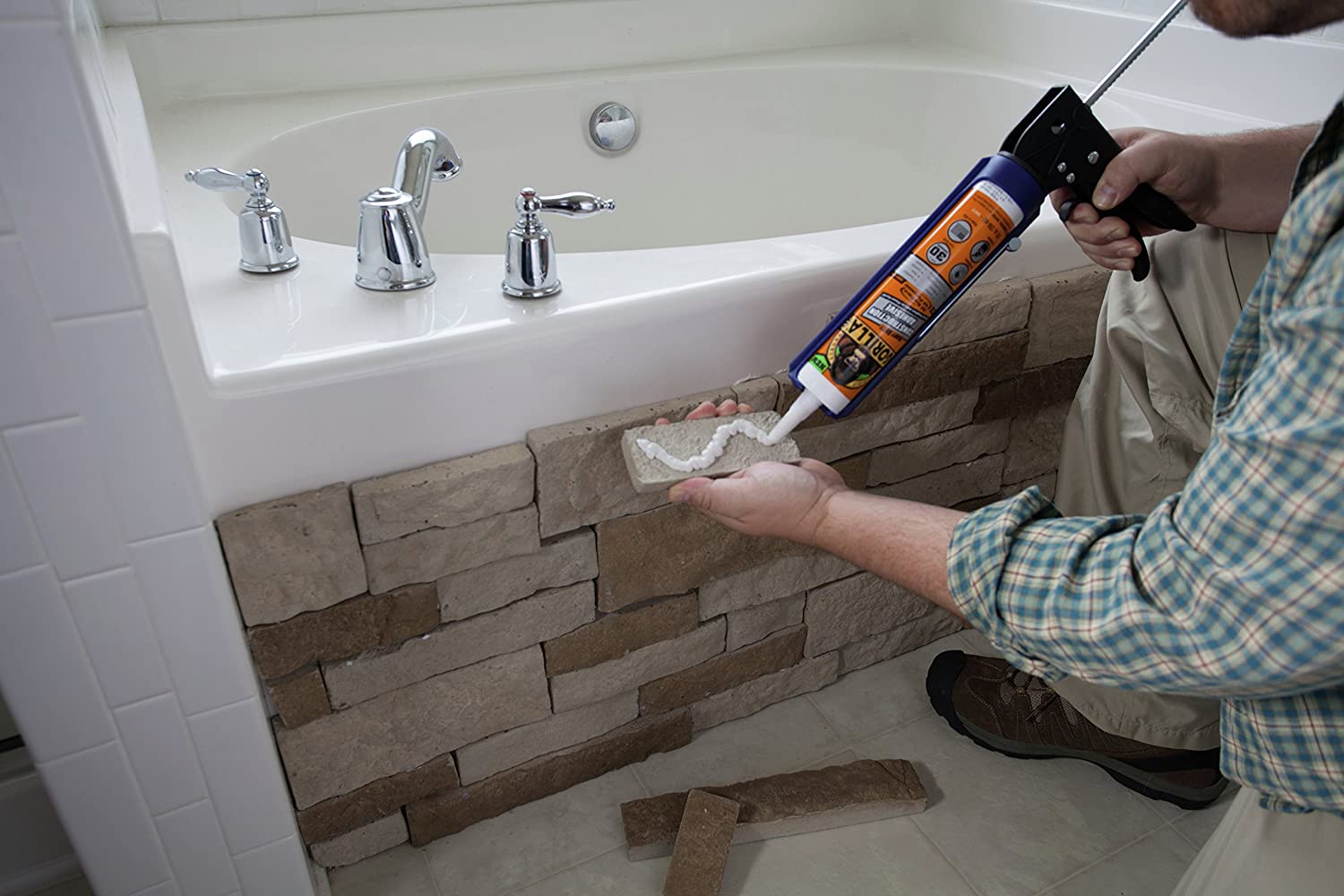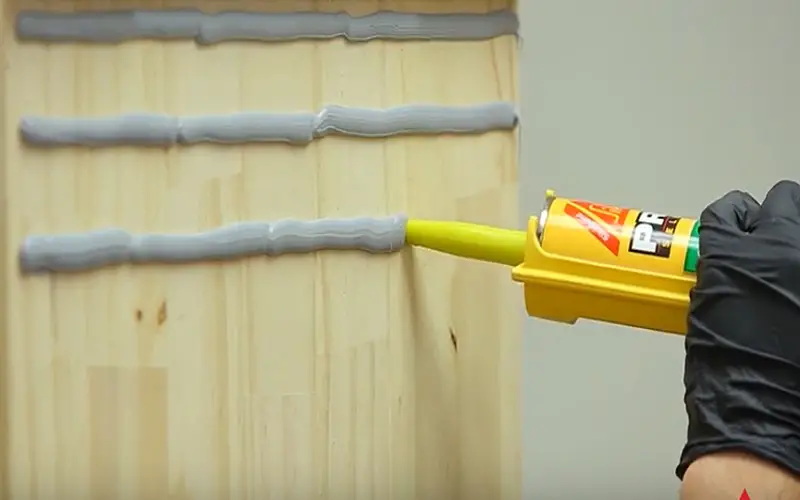No, construction adhesive should not be used for tile installation. Tile adhesive specifically designed for this purpose should be used instead.
When installing tile, it is important to use the correct adhesive for a successful and long-lasting result. Construction adhesive is not formulated to withstand the rigorous demands of tile installation, such as withstanding moisture and temperature changes.
Tile adhesive, on the other hand, is specifically designed for bonding tiles to various surfaces and provides a strong, durable bond.
Using construction adhesive for tile could result in tiles not adhering properly or coming loose over time. To ensure a successful tile installation, always use the appropriate tile adhesive recommended by manufacturers and follow proper installation techniques.
Contents
Compatibility Of Construction Adhesive With Tiles
When considering a tile installation project, it’s essential to understand the compatibility of construction adhesive with tiles. Utilizing construction adhesive in tile installation can offer several advantages and disadvantages.
To ensure a successful and durable tiling job, it’s crucial to weigh these factors before proceeding. This article delves into the pros and cons of using construction adhesive for tiles.
Pros Of Using Construction Adhesive For Tiles
- Strong Bond: Construction adhesive creates a robust, permanent bond between the tile and the substrate.
- Versatility: It can be used on various surfaces such as concrete, plywood, or cement backer board.
- Water Resistance: Many construction adhesives are formulated to resist moisture, making them suitable for wet environments like bathrooms and kitchens.
- Reduced Tile Slippage: It helps prevent tiles from shifting during the curing process, ensuring precise placement.
- Time-Saving: Application and setup are typically faster compared to traditional mortar, accelerating the tiling process.
Cons Of Using Construction Adhesive For Tiles
- Limited Adjustability: Once the tile is set in adhesive, adjustments are challenging, making it crucial to ensure accurate placement from the start.
- Potentially Messy Cleanup: If excess adhesive seeps through grout lines, it can be difficult to clean up and may affect the aesthetic finish.
- Temperature Sensitivity: Some adhesives have temperature requirements for proper curing, which may pose challenges in extreme climates.
- Thinner Application: Certain types of construction adhesives may not provide the same level of support for heavier or larger tiles compared to thick-set mortar.
Factors To Consider
Factors to Consider when using Construction Adhesive for Tile
Type Of Tile Material
It’s crucial to match the construction adhesive with the type of tile material being used. Porcelain and ceramic tiles are widely used and require different adhesives due to their varying properties.
Surface Preparation Before Adhesive Application
Before applying the construction adhesive, it’s important to prepare the surface properly.
This may include cleaning the surface, removing any dust or debris, and ensuring that it’s level and free from any moisture or other substances. Proper surface preparation is essential for ensuring a strong bond between the tile and adhesive.
Installation Process
Step-by-step Guide For Using Construction Adhesive With Tiles
- Prepare the surfaces by cleaning and ensuring they are dry.
- Apply construction adhesive in small, even beads on the back of the tile.
- Press the tile firmly onto the surface, ensuring proper alignment.
- Allow the adhesive to set as per the manufacturer’s instructions.
- Grout the tiles once the adhesive has fully cured.
Tips For A Successful Tile Installation With Construction Adhesive
- Choose a high-quality construction adhesive suitable for tiles.
- Work in small sections to avoid the adhesive drying out too quickly.
- Double-check alignment and spacing before pressing the tile into place.
- Use spacers to maintain uniform gaps between tiles.
- Wipe off any excess adhesive immediately to prevent staining.
Comparison With Traditional Tile Adhesives
When it comes to tiling projects, choosing the right adhesive is crucial for ensuring a long-lasting, sturdy bond. Traditionally, tile adhesives have been the go-to option for securing tiles to surfaces.
However, with the advancements in construction materials, many people wonder if they can use construction adhesive for tile installation instead.
In this section, we will compare construction adhesive with traditional tile adhesives, focusing on strength and durability, as well as water resistance and maintenance.
Strength And Durability
One of the key factors to consider when selecting an adhesive for your tile installation is the strength and durability it offers.
raditional tile adhesives, such as cement-based thin-set mortar, have been widely used for their ability to provide a strong bond between the tiles and the substrate.
However, construction adhesive is no slouch either. In fact, construction adhesives are known for their exceptional bonding strength, making them suitable for a variety of applications, including tile installation.
Construction adhesives are formulated to have high adhesion and cohesive strength, allowing them to create a robust bond between the tiles and the surface.
Whether you are working with ceramic, porcelain, or natural stone tiles, construction adhesive can provide the strength needed to keep them securely in place. Additionally, construction adhesives have excellent resistance to shear forces, preventing tiles from loosening or cracking over time.
Water Resistance And Maintenance
Water resistance is another crucial aspect to consider when choosing an adhesive for tile installation, especially in areas exposed to moisture, like bathrooms and kitchens.
Traditional tile adhesives, such as thin-set mortar, offer good water resistance when properly mixed and applied. However, construction adhesive takes water resistance to the next level.
Construction adhesives are specifically designed to withstand water exposure, making them highly suitable for wet areas. They are typically formulated to be waterproof, preventing moisture from seeping through and causing damage to the underlying surface.
This not only helps to maintain the integrity of the adhesive bond but also prevents the growth of mold and mildew, ensuring a hygienic environment for your tiled surfaces.
In terms of maintenance, construction adhesive offers added convenience. Unlike traditional tile adhesives that may require periodic reapplication or touch-ups, construction adhesive provides long-lasting performance with minimal upkeep.
Once properly installed, your tiled surfaces will stay secure and durable for years to come, reducing the need for frequent maintenance or repairs.
In conclusion, while traditional tile adhesives have proven their reliability over the years, construction adhesive offers a comparable level of strength and durability, with the added benefits of enhanced water resistance and low maintenance requirements.
Whether you are embarking on a small DIY project or a large-scale tile installation, considering construction adhesive as an alternative can provide you with peace of mind and long-lasting results.
Safety Precautions
When it comes to using construction adhesive for tile projects, it’s crucial to prioritize safety precautions to ensure a smooth and risk-free experience.
By following the appropriate guidelines and taking necessary safety measures, you can mitigate any potential dangers and complete your tiling project with confidence. This section highlights the key safety precautions that you should keep in mind while handling construction adhesive for tile applications.
Handling Of Construction Adhesive
Proper handling of construction adhesive is essential to avoid accidents and ensure successful tile installation.
Follow these steps to handle the adhesive safely:
- Always read and carefully follow the manufacturer’s instructions for the particular type of construction adhesive you are using.
- Wear gloves to protect your hands from direct contact with the adhesive. Disposable latex or nitrile gloves are recommended.
- Ensure that the area where you are working is well-ventilated to prevent the buildup of harmful fumes.
- Before starting any tile installation, inspect the adhesive container for any signs of damage or leaks. Discard any damaged containers and use a new, intact one.
Ventilation And Protective Gear
Good ventilation is crucial when working with construction adhesive to minimize the risk of inhaling potentially harmful fumes. Additionally, wearing appropriate protective gear can further safeguard your health.
Here are some key points to remember:
- Work in a well-ventilated area or open windows and use fans to improve air circulation.
- Consider wearing a mask or respirator specifically designed for protection against adhesives and their fumes.
- Protect your eyes by wearing safety goggles to prevent any adhesive splashes from reaching your eyes.
By ensuring proper ventilation and wearing the necessary protective gear, you can safeguard yourself while working with construction adhesive for your tile project. Taking these precautions will help create a safer environment and minimize any potential risks.

Case Studies
Successful Tile Installations Using Construction Adhesive
Mr. Smith successfully tiled his kitchen using construction adhesive.
| Name | Location | Tile |
|---|---|---|
| Mr. Smith | Kitchen | Ceramic |
- Mr. Greene tiled his bathroom with large format tiles using construction adhesive.
- Ms. Johnson used construction adhesive for outdoor patio tile installation successfully.
Challenges Faced And Lessons Learned
Ms. White faced challenges with uneven surfaces when using construction adhesive for tiling.
- Important to level the surface before using construction adhesive.
- Mr. Black learned that proper curing time is crucial for strong adhesion.

Frequently Asked Questions For Can I Use Construction Adhesive For Tile
Can You Use Construction Adhesive Instead Of Thinset?
Yes, construction adhesive is not a suitable substitute for thinset. Thinset is specifically designed for setting tiles, while construction adhesive is not suitable for the same purpose.
Using construction adhesive instead of thinset can result in improper tile installation and potential long-term issues.
Can I Use Liquid Nails On Tile?
Yes, you can use liquid nails on tile as an adhesive for certain applications. It provides a strong bond when used according to the manufacturer’s guidelines.
Can You Use Wall Adhesive On Floor Tiles?
No, wall adhesive should not be used on floor tiles as it is not designed for heavy foot traffic and may not provide a secure bond.
What Adhesive Do You Use For Tiles?
Use an adhesive specifically designed for tiles. This will ensure a strong and durable bond.
Conclusion
Using construction adhesive for tiling can be a cost-effective and time-saving solution. However, it’s important to understand the limitations and potential risks involved.
Consider consulting with professionals to ensure proper installation and longevity of your tiled surfaces. Choose quality products for best results.

